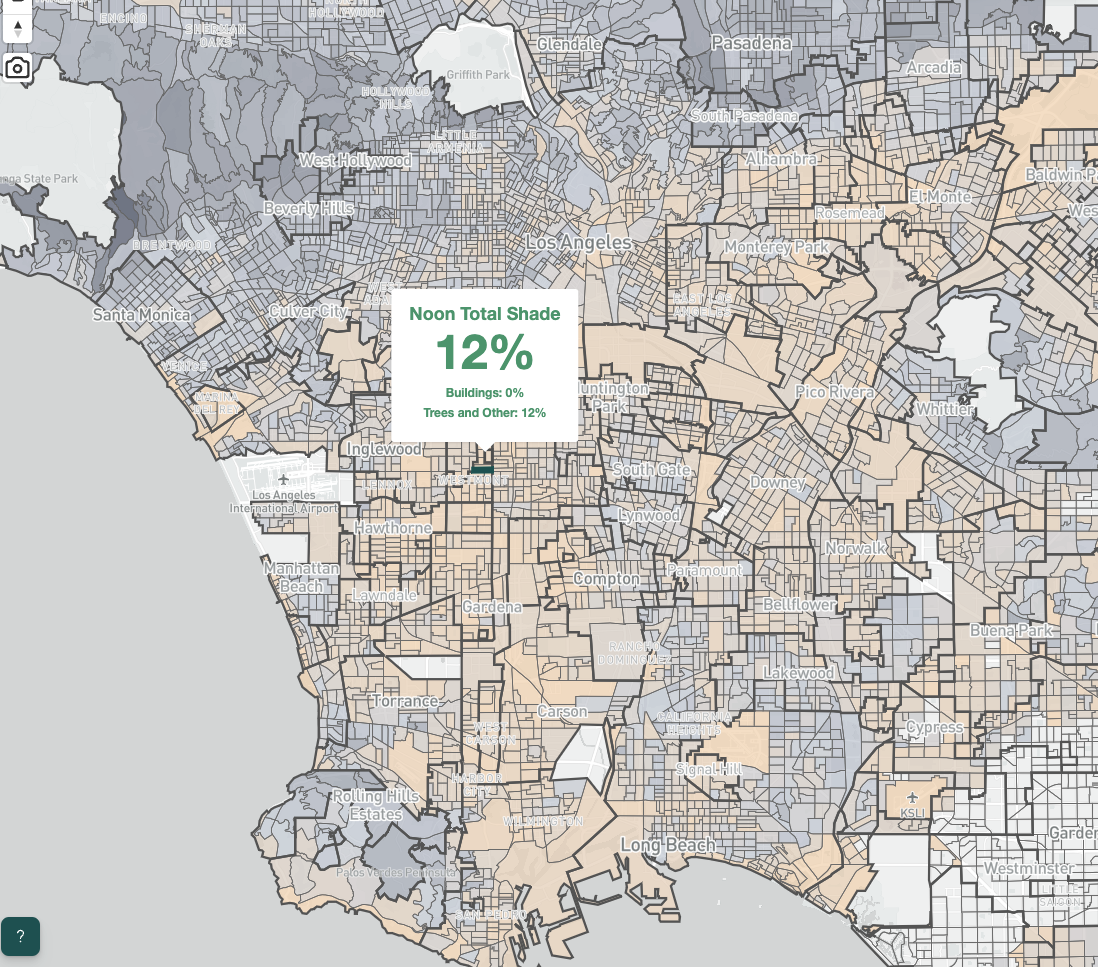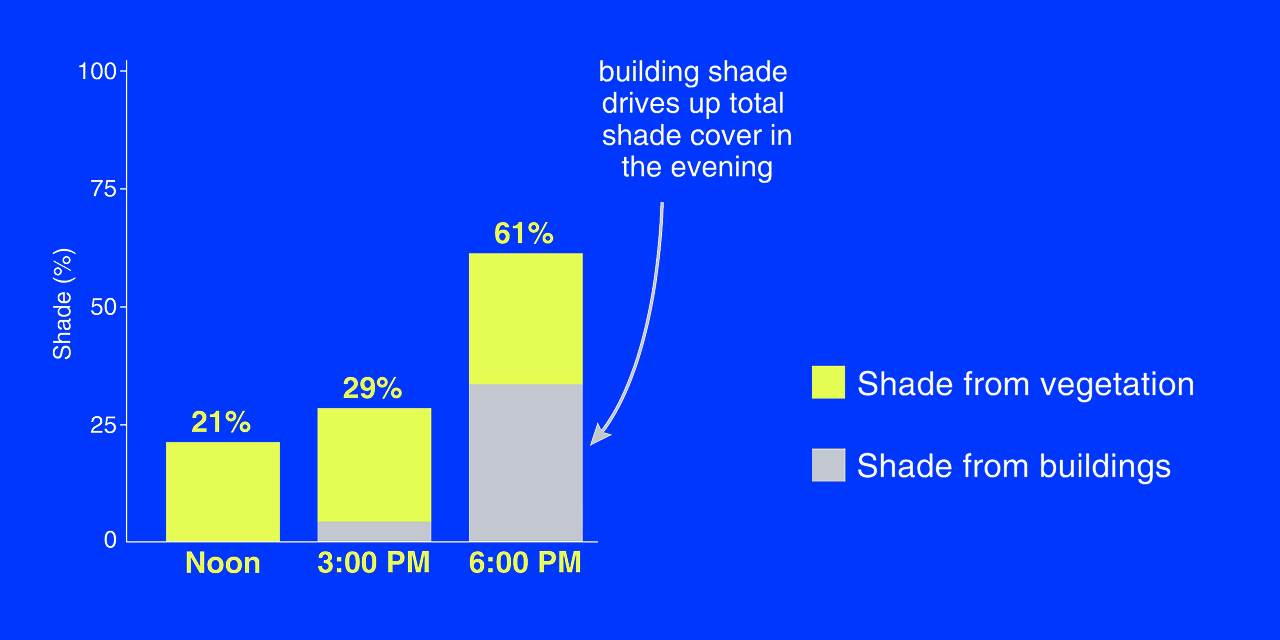ShadeMap

A new lens on heat and where shade is needed most
Mapping Shade with UCLA
Shade is one of the simplest—and most powerful—tools we have to keep people safe in a hotter Los Angeles. But until now, it’s been hard to answer a basic question: Where is the shade?
Thanks to new research led by Dr. Kelly Turner at the UCLA Luskin Center for Innovation, in partnership with American Forests, shade is finally visible—and mappable—across hundreds of cities, including LA.
Explore the Shade Map
UCLA’s high-resolution data, now integrated into American Forests’ Tree Equity Score National Explorer, allows you to:
-
01
See how much shade is available
At three times of day (noon, 3pm and 6pm) in every Census block group
-
02
Understand what’s casting the shade
Trees, buildings, or both
-
03
Layer in social and environmental data
Such as income, demographics, canopy cover, and heat exposure
-
04
Identify shade deserts
And prioritize areas where investment is most needed
Quick Facts
Average shade in LA

-
01
21% shade coverage at noon
On average, urbanized areas in Los Angeles County* have 21% shade at noon when the sun is directly overhead.
-
02
Shade doubles by 6pm
Later in the day (6PM), average shade more than doubles to 61%.
-
03
Vegetation provides the majority of shade at noon
Vegetation contributes the majority of shade at noon (99%). In comparison, buildings account for 55% of shade at 6 PM, indicating a shift in dominant shading sources over the course of the day.
-
04
LA is 6% below the national average
At noon, shade across urbanized areas in Los Angeles County is 6% lower than the national average (27%). However, by 6 PM, shade in these areas is 2% higher than the national average (59%).
UCLA Luskin Center for Innovation is a proud partner of the ShadeLA team, and their cutting-edge shade mapping work with American Forests is helping put the power of data into the hands of decision-makers, designers, and communities across Los Angeles.
Let’s use it to cool LA—together.